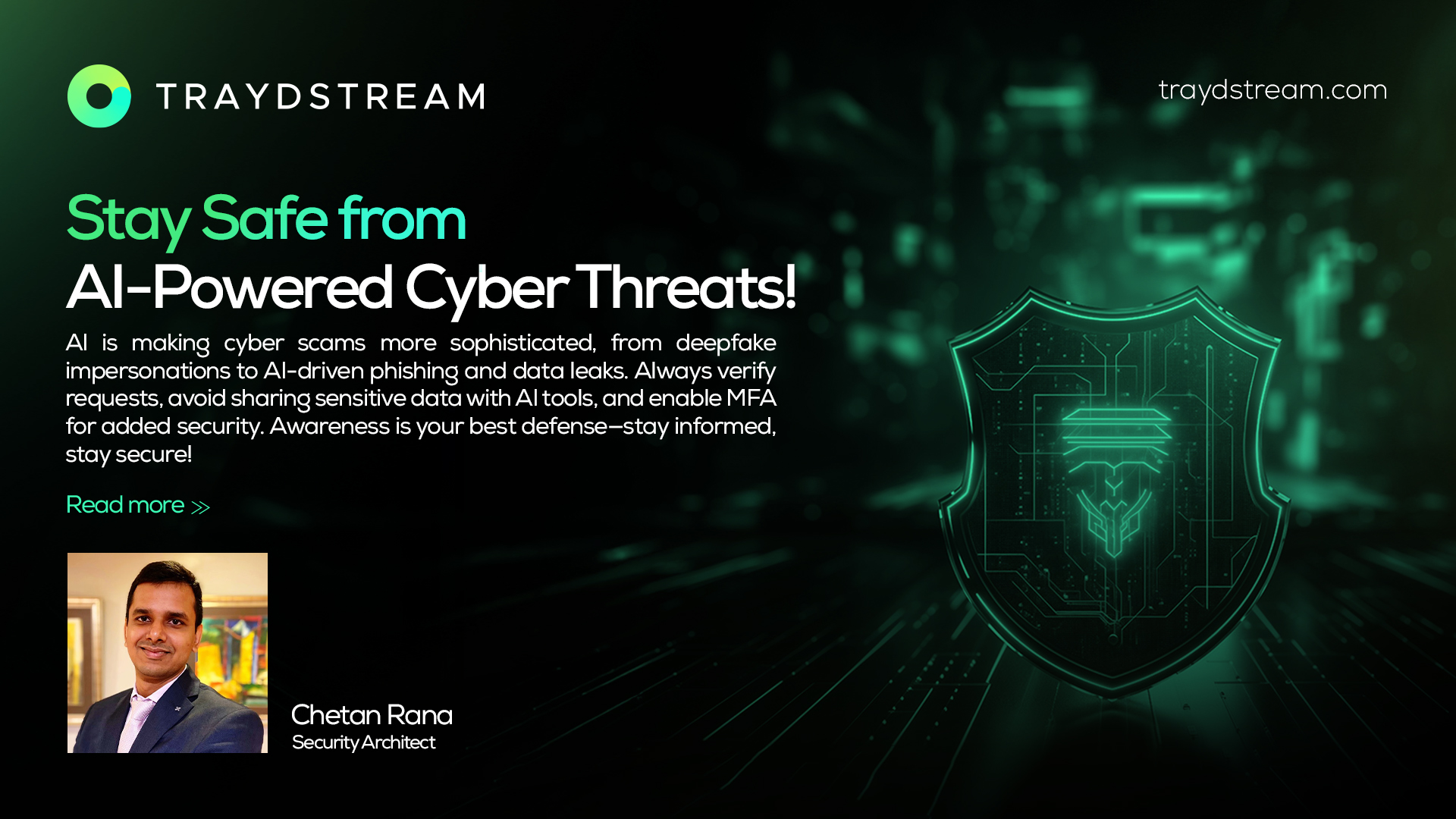
Cybersecurity threats are evolving faster than ever, with attackers continuously finding innovative ways to exploit vulnerabilities. While security tools and policies help mitigate risks, AI is reshaping the cybersecurity landscape—both as a tool for defenders and a weapon for cybercriminals. The Annual ThreatLabz 2025 report reveals a staggering 3,000% year-over-year increase in enterprise use of AI/ML tools, as organizations embrace AI to enhance productivity, efficiency, and innovation. However, this rapid adoption has also introduced new security challenges, making it critical for employees to understand how AI-powered threats work and how to protect themselves.
Let’s dive into some of the major AI-driven security risks in the workplace—and how to stay ahead of them.
Top AI Security Threats Employees Should Watch Out For
- AI-Powered Impersonation & Deepfake Scams
AI isn’t just boosting productivity—it’s also being weaponized by cybercriminals. Deepfake technologyhas advanced to the point where attackers can convincingly mimic voices and even generate realistic video footage, making impersonation scams more dangerous than ever.- Real-World Example:In 2024, an employee in Hong Kong joined a video conference with his company’s CFO—only it wasn’t his actual CFO. Scammers had used AI to create a deepfake video of the executive, tricking the employee into transferring $25 million to a fraudulent account.
- Why It Matters:This real-world example highlights how far deepfake scams have come. From fake “kidnapping” calls mimicking loved ones’ voices to forged executive videos instructing employees to transfer funds, AI-driven fraud is skyrocketing. Reports show that in 2024, deepfake attacks occurred every five minutes, making up 40% of all biometric fraud. Gartner even predicts that by 2026, 30% of enterprises will no longer trust authentication solutions that rely solely on identity verification.
- How to Protect Yourself: Never Trust Always Verify (Zero Trust Security Principal)
- Verify Before Acting– Always confirm financial transactions, sensitive approvals, or high-stakes directives through a separate communication channel before acting.
- Use Known Contacts– A quick phone call or message to the requester (using a previously known number) can help prevent falling victim to AI-powered fraud.
- Be Skeptical of Video & Voice– If something feels off, it probably is. AI-generated deepfakes can be eerily realistic.
- Data Leaks Through AI Tools
AI models process and retain information, sometimes in ways that aren’t immediately visible. This can result in unintended data exposureif employees enter sensitive details.- The Risk:Employees often copy-paste confidential data—like internal reports, customer records, or source code—into AI-powered tools without realizing where that data might be stored or how it might be used.
- How to Protect Yourself:
- Avoid sharing company secrets, proprietary data, or personal informationin AI tools unless explicitly approved by your organization.
- Use enterprise-approved AI tools & modelsthat comply with company security policies.
- Understand AI’s data policiesbefore using any external tool for work.
- Misinformation & AI-Generated Content Risks
AI tools can generate convincing yet inaccurate or misleading information. Blindly trusting AI-generated responses can lead to security risks, misinformation, and compliance violations.- How to Protect Yourself:
- Always double-check AI-generated outputs before using them for decision-making, reports, or external communications.
- Verify through official sourceswhen dealing with legal, financial, or security-related content.
- How to Protect Yourself:
- AI-Enhanced Phishing: Faster, Smarter, and Harder to Detect
- Real-World Example:In In 2024, security researchers reported a rise in AI-powered phishing, where cybercriminals leveraged AI chatbots to craft convincing messages and interact with victims in real-time. These chatbots convincingly impersonate IT support teams, tricking employees into revealing login credentials or installing malware.
- Why It Matters:Phishing was already one of the most common cyber threats, but AI has taken it to the next level. Attackers can now automate large-scale campaigns, generate personalized emails that mimic writing styles, and even craft multilingual phishing messages—all at an unprecedented speed. AI tools allow cybercriminals to bypass traditional security filters by making phishing emails appear more legitimate and contextually relevant.Cybercriminals use AI to harvest publicly available data from social media, corporate websites, and public records. This allows them to customize phishing attacks with highly relevant details, making their messages seem more authentic.
- Tip for Employees:Do not trust an email, chat message, or phone call just because it “sounds right.” Be cautious with unexpected password reset requests, account verifications, or urgent financial transactions.
- Always verifysuch requests directly with the sender using a known and trusted communication channel before taking action.
- Use Multi-Factor Authentication (MFA):Even if attackers steal your credentials, MFA adds an extra layer of security, making it significantly harder for them to gain access to your accounts. Enable MFA wherever possible, especially for work-related applications and sensitive systems.
Final Thoughts
AI is transforming how we work—but it’s also changing how cybercriminals operate. From deepfake scams to AI-powered phishing and data leaks, attackers are using AI to outsmart traditional security measures.
It’s not all doom and gloom—there are simple yet effective steps we can take to stay protected. One of the best defenses is awareness and vigilance. By staying informed about AI-driven threats and following security best practices, employees can help safeguard both themselves and their organization from next-generation cyberattacks.


